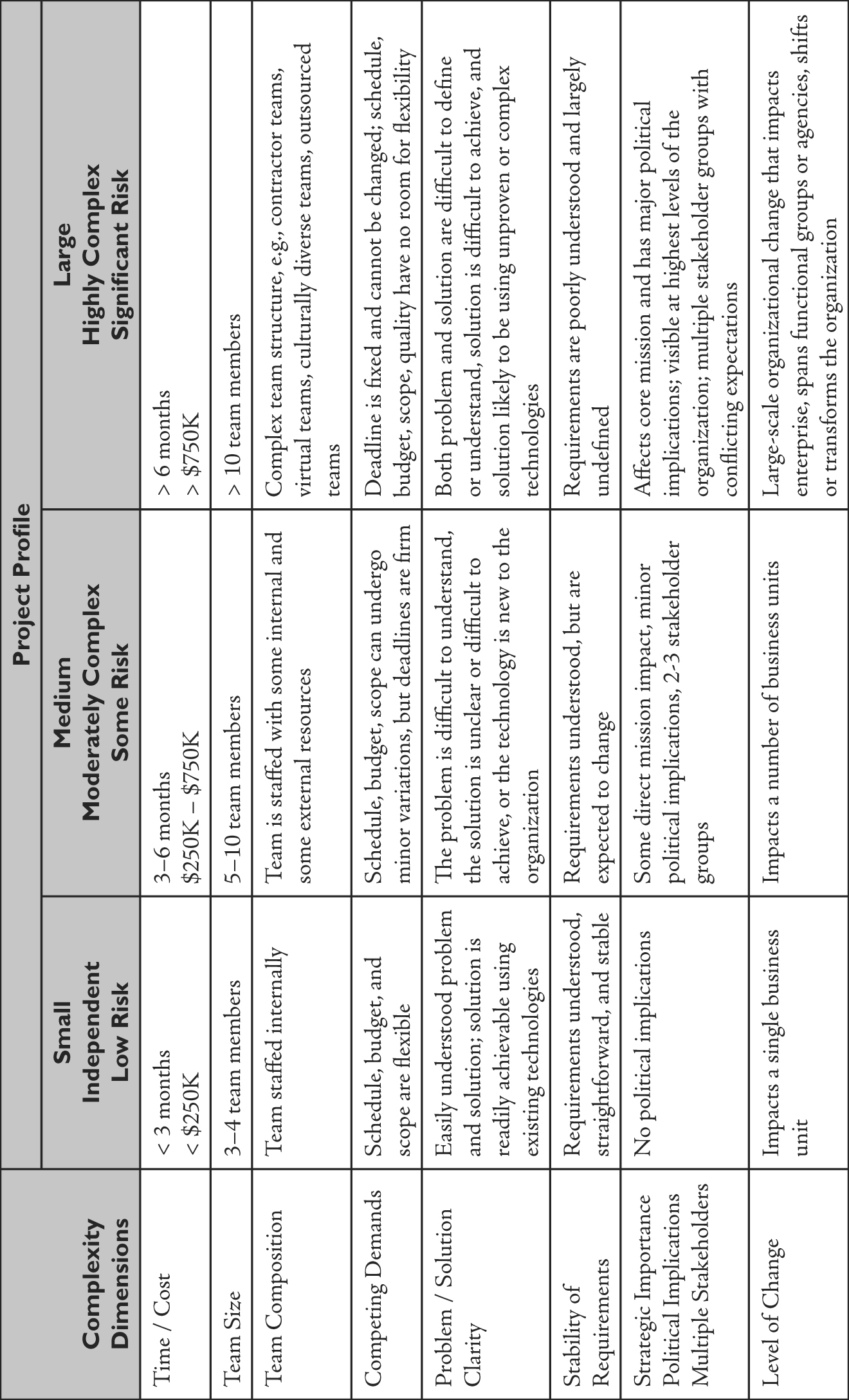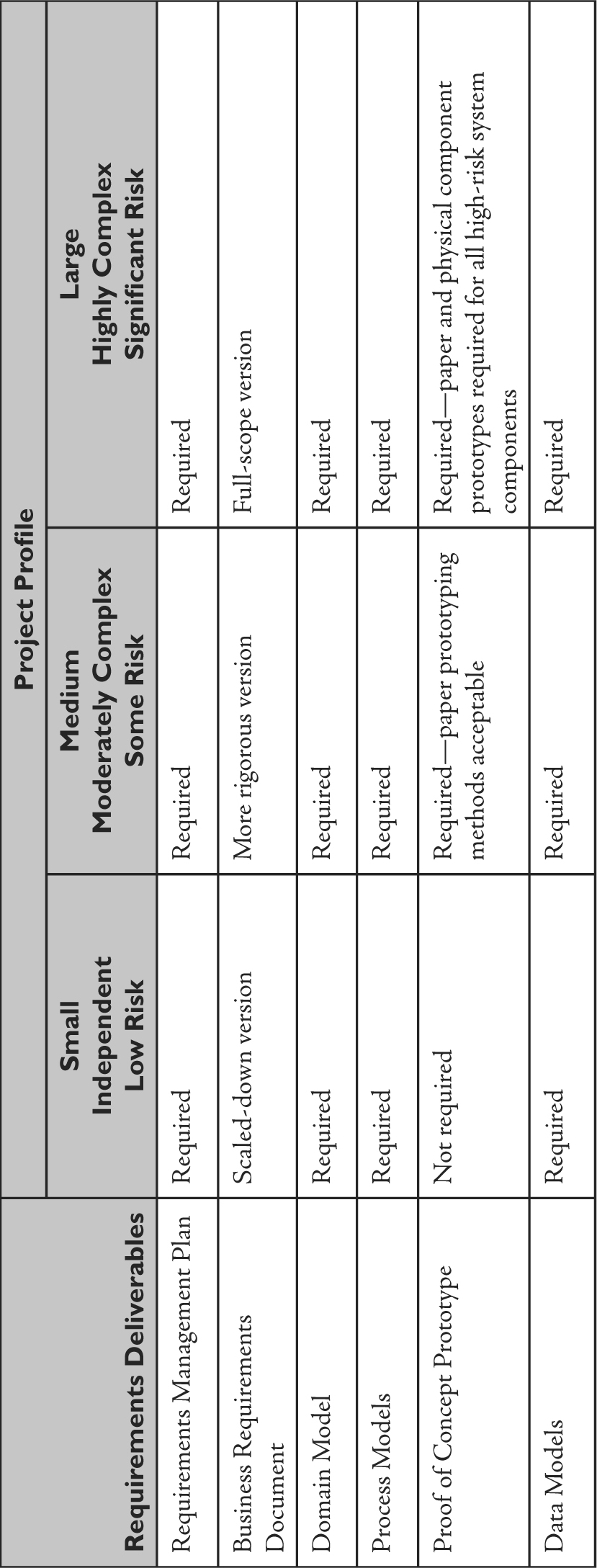Chapter 3
Assess Project Size, Complexity, and Risk
In This Chapter:
The Project Complexity Model
Scale Requirements Deliverables to the Project Profile
The amount and type of requirements activities that are appropriate to each project vary depending on the size, risk, and complexity of the project. Opinions vary on how much upfront requirements development and definition is needed. Often, there is considerable pressure to rush through the requirements activities and have the solution development team begin design and construction as soon as possible. Using a defensible rationale to plan requirements activities will give you a powerful tool when asking management for the required resources and time commitment to produce high-quality requirements.
To objectively make the decision about which requirements activities to plan, and to determine the amount of rigor to use when eliciting requirements, it is helpful to analyze the complexity and risk of the project. Obviously, high-risk projects require heavier methodologies, tools, and techniques to reduce project risks. Small, rather straightforward projects need much lighter methods.
The Project Complexity Model
The Project Complexity Model shown in Table 3-1 can be used to determine the size, risk, and complexity of projects, and thus to determine the level of rigor required to manage the projects successfully.1 It may be appropriate to update this model to make it more closely align to the complexities faced in the organization and on the particular project. Once the project profile is understood, the core project planning team determines the requirements activities and deliverables that are needed to manage each dimension of complexity.
To use the model to diagnose the size, complexity and risk of a particular project, shade the boxes that describe the project and apply the complexity formula described in Table 3-2—Project Complexity Formula.
Scale Requirements Deliverables to the Project Profile
The result of the analysis of project complexity, provides guidance for the project team in determining the requirements activities needed. This analysis also provides supporting information that can be used to present a rationale to the management team and/or project sponsor for the level of requirement elicitation and analysis rigor planned.
To ensure the complexity analysis supports project decisions, link the project profile to specific requirement deliverables to be created. Refer to Table 3-3 for a sample matrix of requirement deliverables mapped to project size, complexity, and risk. Note that additional criteria should also be taken into account when determining the requirements deliverables, e.g., organizational standards that the project must comply with or tools that are used in the organization to support the requirements processes.
Table 3-1—Project Complexity Model
Table 3-2—Project Complexity Formula
Summary
![]() Use a defined process to determine the size, risk, and complexity of the project.
Use a defined process to determine the size, risk, and complexity of the project.
![]() Plan requirements activities to be conducted and deliverables to be created based on the project size, risk, and complexity.
Plan requirements activities to be conducted and deliverables to be created based on the project size, risk, and complexity.
![]() Consider other constraints, e.g., organizational standards and expectations.
Consider other constraints, e.g., organizational standards and expectations.
Action Plan for the Business Analyst
![]() Customize the project complexity model to the project environment.
Customize the project complexity model to the project environment.
![]() Collaboratively determine the size/risk of the project and establish plans accordingly with the project manager and key business and technology experts.
Collaboratively determine the size/risk of the project and establish plans accordingly with the project manager and key business and technology experts.
Table 3-3—Sample Matrix of Requirement Deliverables Mapped to Project Complexity, Size, and Risk

Endnote
1. Kathleen B. Hass. “Living on the Edge: Managing Project Complexity.” Originally published as part of 2007 PMI Global Congress Proceedings North America.


